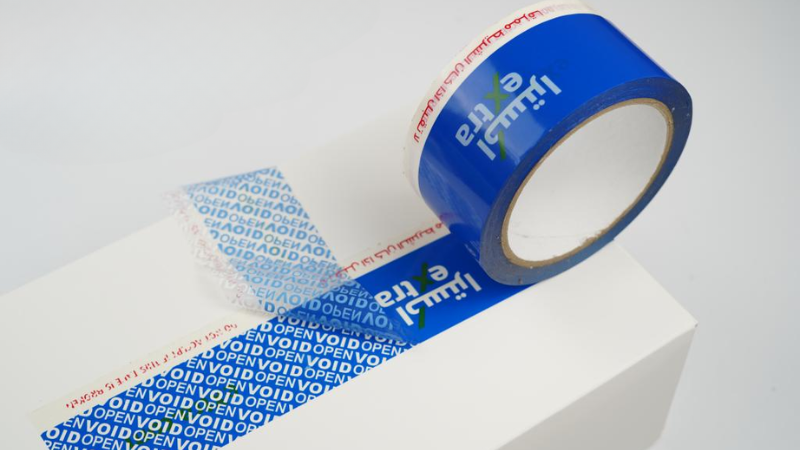Cargo theft in North America climbed by 27% in 2024, with nearly 3,800 incidents and reported losses of around $455 million, according to CargoNet data. These aren’t just isolated heists—they often involve strategic deception and deep fake documentation to steal high-value shipments. That kind of threat calls for more than hope; it needs visible safeguards that make tampering obvious.
Anti-tamper tapes bring that visibility! The tape’s design is simple but effective. It breaks, changes color, or reveals a “VOID” mark if tampered with. And as global supply chains face more fraud and forged pickups, this simple layer can make a big difference. In the following guide, you’ll learn how this tape works, which types match each need, and how businesses are already using it to stay secure.
What Is Anti-Tamper Tape and How Does It Work?
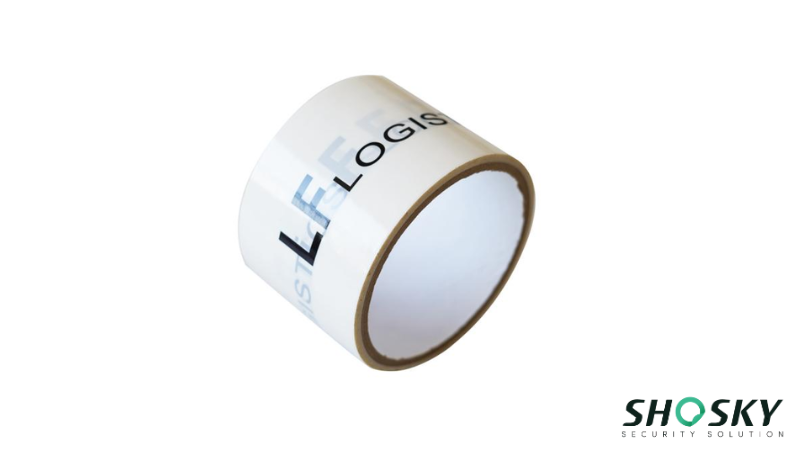
Anti‑tamper tape, or tamper-evident tape, is a security tape used in packaging to make tampering easy to spot. It’s applied like regular tape. But this tape doesn’t just seal a box—it also reveals if it’s been opened. Once applied, the tape forms a bond with the surface.
And if someone tries to lift, cut, or peel it off, the tape reacts in a way that shows interference happened. Typical tamper responses include:
- Surface damage or visible disruption when lifted
- Adhesive marks that stay on the box after peeling
- Layer separation that exposes hidden warning text
- Residue that cannot be wiped away
- Breakage that prevents the tape from being reused
These reactions make it hard for anyone to open and re‑seal a package without leaving a trace. It also sends a clear message: this package is being monitored. That alone can stop many would‑be tamperers from trying in the first place.
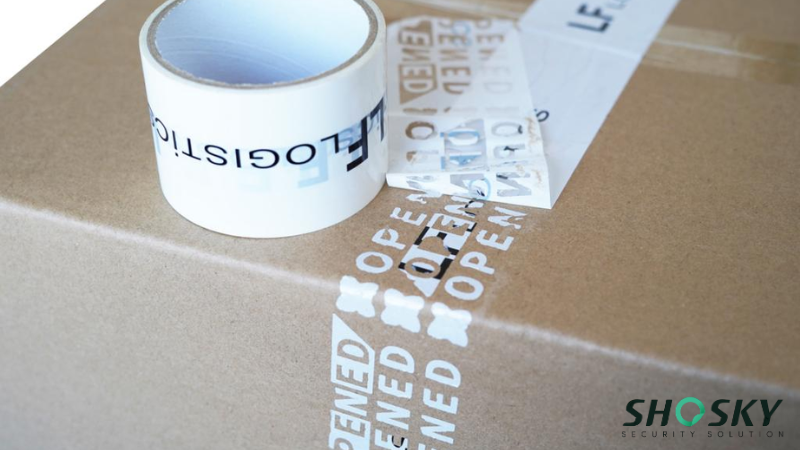
Types of Anti-Tamper Tapes for Packaging and Logistics
Tamper-evident tapes come in different types, each designed to show signs of interference in a specific way. Here’s a quick breakdown of the most common options used in shipping, storage, and security-sensitive areas.
1. Destructible Tape
Destructible tapes are designed to break apart on removal. These security tapes for packaging are made from fragile material that tears, flakes, or shreds if someone tries to lift them. Because the tape can’t come off in one piece, it’s impossible to reuse or replace it without detection. Even a small tampering attempt leaves a clear mess behind.
These are commonly used for high-value electronics, pharmaceutical packaging, or sensitive items that require extra handling control. Their one-time-use design stops re-sealing, which helps prevent inside jobs or unnoticed swaps.
2. Void Tape
Void security tape is one of the most widely used forms of tamper-evident packaging tape.
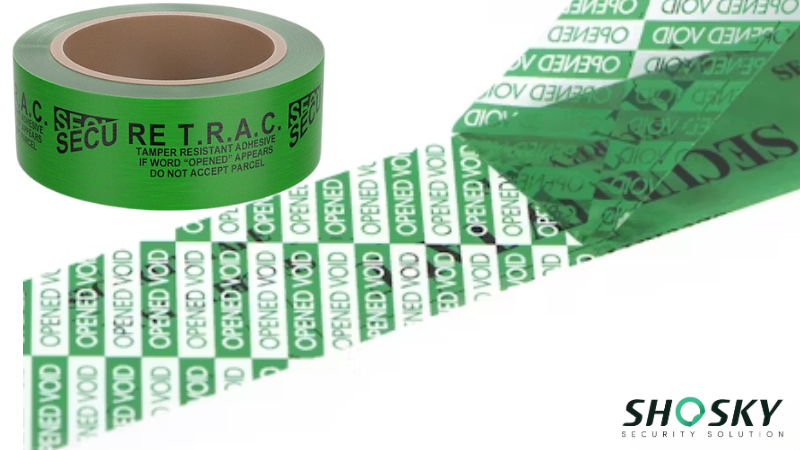
When someone tries to peel off the tape, it leaves behind a clear message—usually the word “VOID”—either on the surface or within the tape itself. This makes it immediately obvious that the seal was broken. Some variants also leave a sticky residue that can’t be cleaned off easily.
These tapes are ideal for sealing shipping cartons, product boxes, or warehouse storage units. Once removed, they can’t be reattached without showing visible damage. That makes them useful in logistics, customs inspections, or anywhere traceability matters. Many brands also use them as a first step toward chain-of-custody compliance.
3. Color-Changing or Reactive Tapes
These tapes use chemical or temperature-based triggers to signal tampering. They might change color when touched, exposed to heat, or peeled off. Some versions include ink that reacts to body heat, UV light, or friction. This makes the tape useful in complex environments like cold-chain transport or warm warehouses.
What sets these apart is their ability to detect tampering even when the package looks untouched. For example, someone might try to peel and reapply tape carefully. But with color-reactive features, even a light attempt leaves a visual clue. This kind of tape is useful where stealth tampering is more likely than forceful entry.
4. Printed Security Tapes with Logos, Serials, or QR Codes

Printed security tapes go beyond tamper detection. These tapes feature custom logos, serial numbers, or QR codes that link to batch data or shipment records. That makes it harder to copy or replace them without being caught. Each roll becomes unique to a product or shipment.
Businesses use this type of tape not just for security, but also for traceability. If a package goes missing or gets intercepted, the printed tape can help confirm where it was last sealed. It also gives your packaging a professional, accountable look.
Anti-Tamper Tape vs Regular Tape: Why Security Matters
Regular tape seals a box, but it doesn’t stop tampering. It can often be peeled off and reapplied without any signs. For high-value or sensitive shipments, that’s a big risk. A box might look untouched even after someone’s opened it. That kind of silent breach leaves your goods and reputation exposed.
Anti-tamper security tape is built to reveal interference. It tears, leaves marks, or changes color when removed—making tampering obvious. That visibility acts as a deterrent and builds trust with customers and inspectors. Here’s how security tape compares to regular tape across key factors:
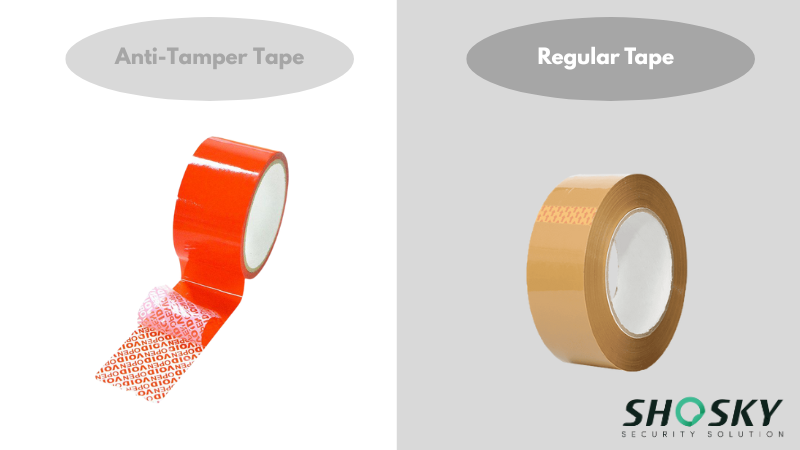
| Feature | Regular Tape | Anti-Tamper Security Tape |
|---|---|---|
| Primary Function | Sealing only | Sealing + Security |
| Tamper Visibility | None | High (leaves marks or residue) |
| Reusability Risk | High | Low |
| Deterrent Value | Minimal | Strong |
| Trust and Compliance | Not suitable | Preferred for regulated goods |
Anti-tamper security tape gives you more than a seal. It adds visibility, discourages tampering, and builds confidence at every step. And in B2B shipments where accountability counts, switching to security tape isn’t an upgrade. It’s a safeguard.
Where and When to Use Anti-Tamper Tape?
A 2023 industry report by Transported Asset Protection Association (TAPA) found that tampering accounted for over 30% of cargo theft incidents globally. As a result, anti-tamper security tape is becoming a go-to, because it makes tampering attempts easy to spot! Here is where and when you can use anti-tamper security tape:
Outer Shipping Cartons
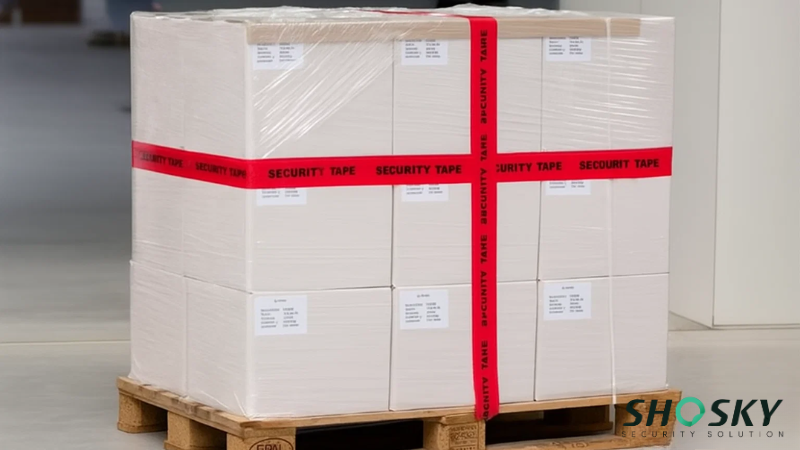
Outer cartons are the first line of defense during transit. Anti-tamper security tape helps flag any tampering before the package reaches its final destination.
If someone cuts the tape, tries to reseal it, or moves items between stops, the evidence stays visible. You can use wide rolls of tape to cover large seams or layer it for extra security. That makes it easier to track the pack through each stage in the cart.
Inner Product Boxes or High-Value Item Packaging
For electronics, collectibles, or branded merchandise, sealing inner packaging is just as important. A 2022 UPS Capital study showed that 1 in 10 eCommerce packages are damaged or lost in transit. Having tamper-evident packaging not only protects the item inside but also builds trust with the buyer.
Customs Clearance or Regulated Product Transport
Cross-border shipments face higher risks of checks or tampering. Tamper-evident tape makes any interference visible without opening the full package. This helps speed up clearance and provides proof of handling if issues come up. If a contact at customs reports a delay or issue, visible signs of tampering can guide your response quickly.
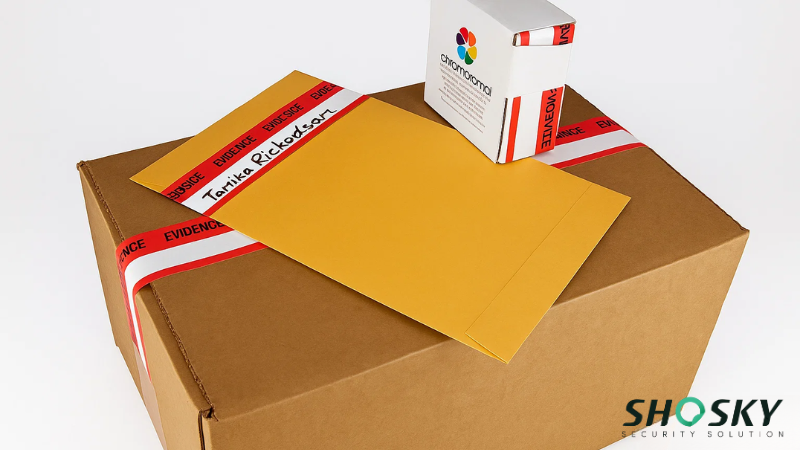
Asset Protection (Electronics, Pharma, Sensitive Docs)
Stored assets like medical kits, devices, or internal records often sit for weeks before use. Applying tamper tape during storage helps you spot if someone accessed a sealed box or container without approval. You can also label each roll with tracking info for better inventory control.
Choosing the Right Tamper-Evident Tape for Your Needs
Choosing tamper-evident tape depends on your product, risk, and usage. Here are a few detailed steps to help you pick the right one.
Step 1: Consider the Surface, Temperature, and Application Method
Before choosing a security tape, check if you’re sealing cardboard, plastic, metal, or shrink-wrap. Rough or uneven surfaces may need a wider width or stronger adhesive. Environmental factors also matter—some tapes don’t perform well in extreme heat, cold, or humidity.
If your packages are stored in long-term storage or go through cold-chain shipping, pick a tamper-evident tape designed for those conditions. Application matters too. Hand application is fine for small batches, but larger operations benefit from automated roll dispensers to speed up the packaging process and avoid misalignment.
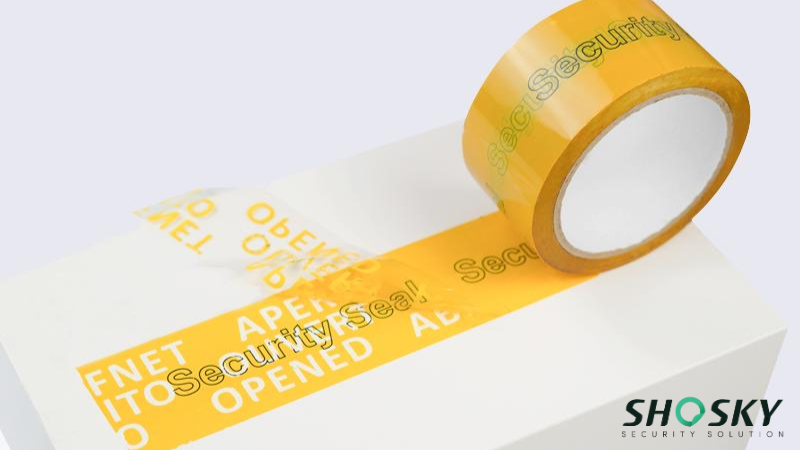
Step 2: Decide Between Permanent and Temporary Security
Some businesses only need tamper protection during delivery. Others need full-time visibility, even in long-term storage or on display shelves. If you’re shipping high-value or regulated items, go for permanent tamper-evident packaging tape that leaves marks when removed.
For short-term use—like internal transfers or resealable packaging—you may prefer temporary tape that doesn’t damage surfaces. Think about your end user: should the tape tear the cart, or just show signs of access? Choosing the right level of permanence avoids overcomplicating simple security needs.
Step 3: Choose Between Printed and Unbranded Options
Custom printing adds more than branding—it helps with traceability and fraud prevention. Tapes can include your logo, batch number, or QR code. This stops counterfeit swaps and gives your security tape a unique identity. It also helps if someone contacts you about lost or tampered items, since the label proves the origin.
Unbranded tapes are fine for low-risk shipping or internal use. But for anything moving through third-party hands or customs, printed tamper-evident tape sends a stronger message. You can order rolls with exact width and color settings to match your packaging line. Red or blue are common choices, but custom printing allows flexibility.
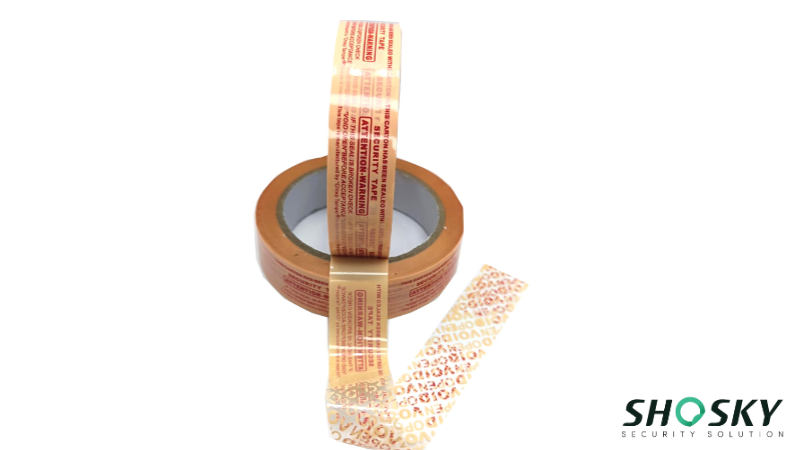
Step 4: Check Supplier Quality and Certification
Not all tamper tapes are created equal. Look for suppliers that meet international packaging security standards. If you’re in a regulated industry like pharma or electronics, your tamper-evident packaging tape may need to comply with ISO or C-TPAT guidelines.
Before placing anything in your cart, check for test results, adhesive strength data, and product reviews. Also, verify contact info and support options—a good supplier responds quickly if something goes wrong. Ask for samples first to confirm the tape works on your packaging material before you commit to a full pack or bulk roll order.
Real-World Use Cases
Tamper-evident tape isn’t just a precaution—it’s a frontline tool in protecting shipments across industries. Whether you’re shipping electronics, pharmaceuticals, or general retail products, using the right security tape helps prevent tampering, supports compliance, and speeds up delivery processes.
Here are some of the brands using tamper-evident packaging tape effectively:
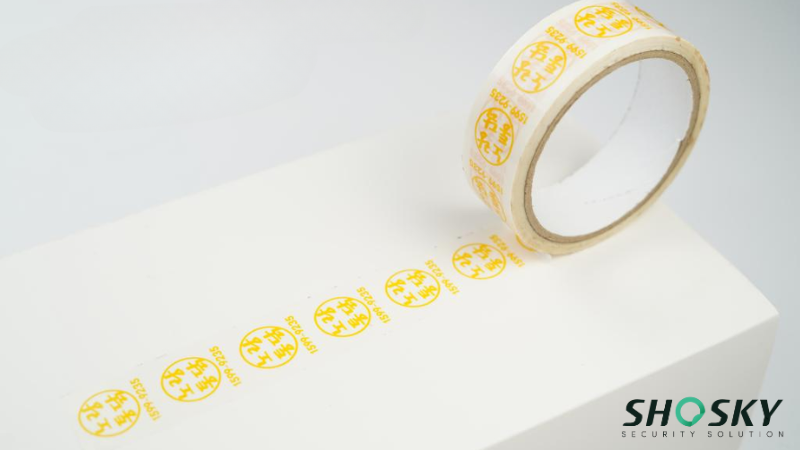
- Samsung Electronics – Uses serialized tape on export cartons to stop component theft and grey market sales.
- Pfizer – Applies chain-of-custody security tape on pharma packaging to meet strict transit regulations.
- Amazon FBA Sellers – Many third-party sellers switched to bold red tape with visible void text to reduce disputes over opened or damaged items.
These brands test tape performance under real shipping conditions—heat, friction, handling—to make sure it holds up. Using the wrong tape may look fine at dispatch, but it will fail during loading or storage. That’s why testing matters just as much as tape selection!
FAQs
Can tamper-evident tape be reused?
No, it can’t be reused. Once removed, the tape leaves a clear “void” message or damages itself, making repacking impossible.
Does anti-tamper security tape work in cold-chain logistics?
Yes, but only if it’s rated for cold environments. Some tapes are specially made to stick even in freezing conditions.
Is it compliant with C-TPAT or ISO 17712?
Tamper-evident tape can support C-TPAT practices, but ISO 17712 applies to container seals, not tape. Make sure your tape matches your security level.
Conclusion
Anti-tamper security tape is a simple, low-cost way to boost packaging security. It adds another layer of control, protects your goods, and supports compliance. Brands across electronics, pharma, and e-commerce rely on these tamper-evident solutions for better control and compliance. If your products are worth shipping, they’re worth protecting—choose a tape that proves it!
Secure Your Supply Chain with Shosky Security
If your shipments carry risk, your packaging tape shouldn’t be a weak point. Shosky Security works with OEMs, 3PLs, and exporters to provide reliable, visible tamper protection across every unit shipped. Contact us to get pricing details, technical specs, or request a sample.
